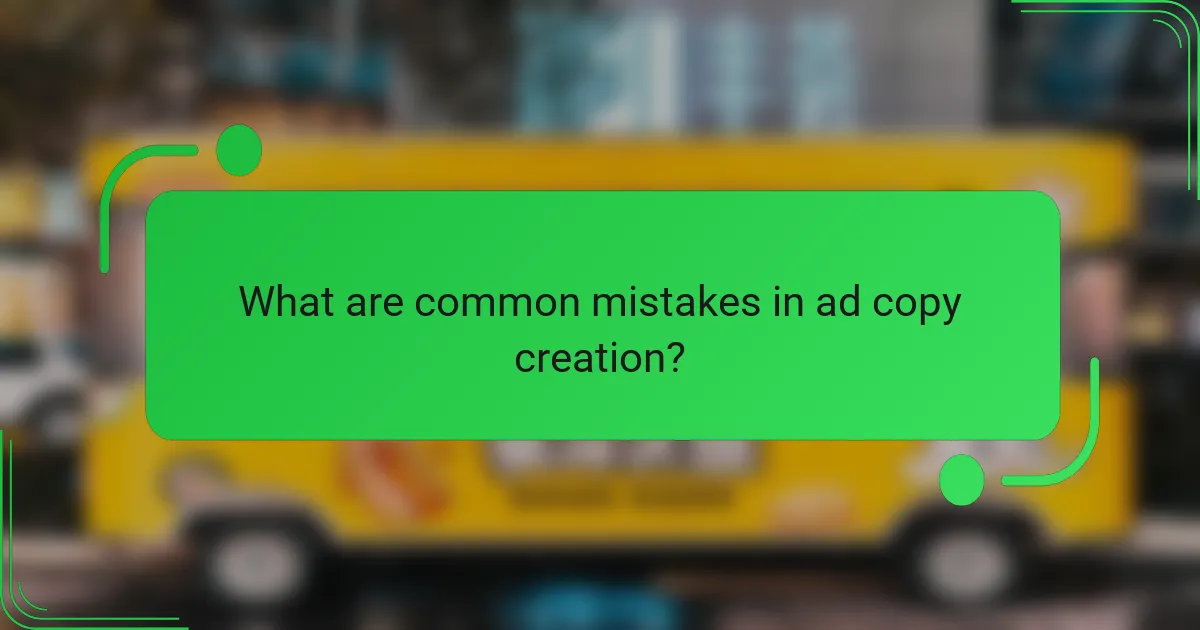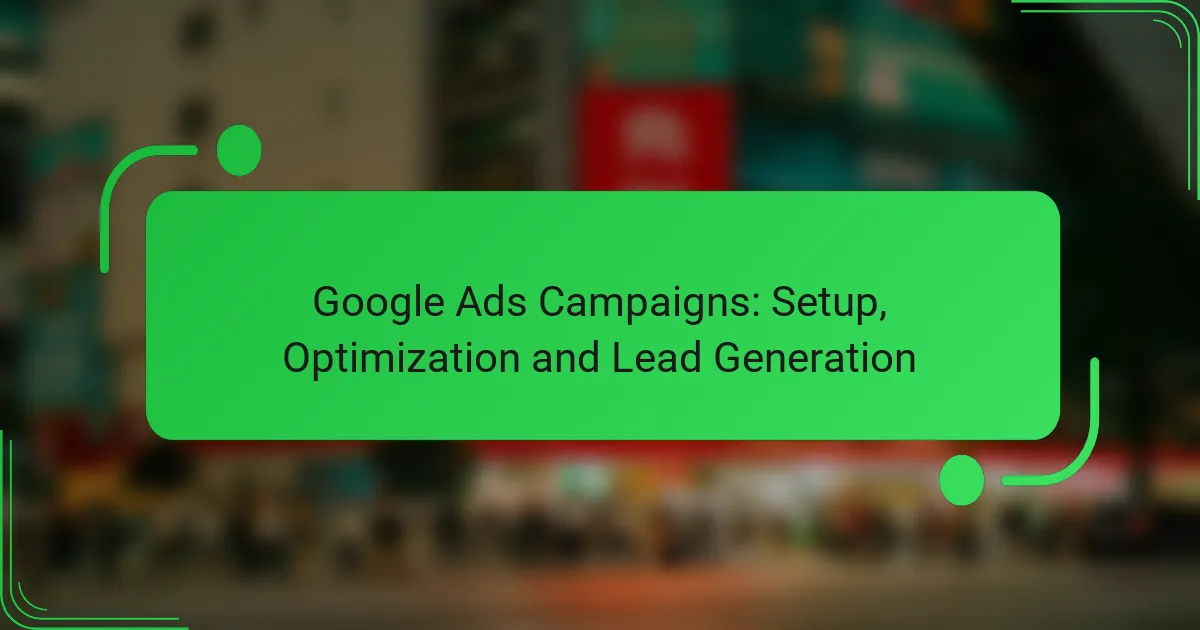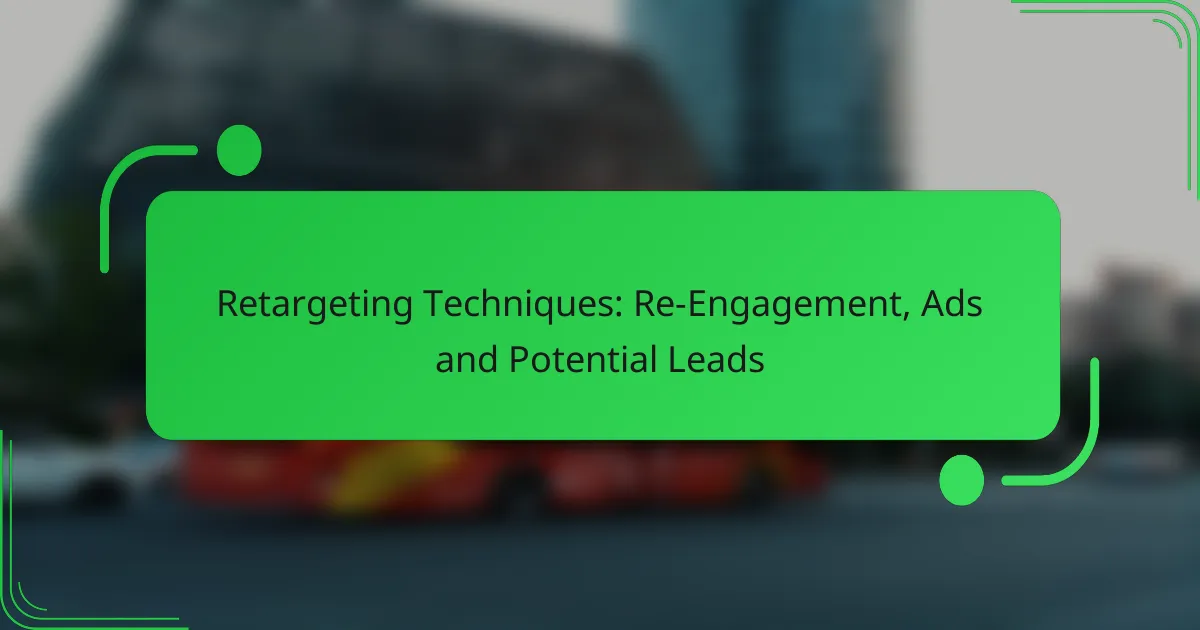In today’s competitive markets, crafting compelling ad copy is essential for capturing audience attention and driving engagement. By understanding your audience’s needs and addressing their pain points with persuasive language and emotional triggers, you can effectively differentiate your message. Employing best practices such as clear communication and highlighting unique selling points, along with leveraging optimization tools, will enhance your ad’s effectiveness and boost conversion rates.

How to create compelling ad copy for competitive markets?
Creating compelling ad copy in competitive markets requires a deep understanding of your audience and their needs. Focus on addressing their pain points, using persuasive language, and incorporating emotional triggers to stand out from the competition.
Focus on audience pain points
Identifying and addressing your audience’s pain points is crucial for effective ad copy. Start by researching common challenges your target market faces and frame your product or service as a solution. This approach not only resonates with potential customers but also builds trust.
Utilize surveys, social media feedback, and competitor analysis to gather insights on what your audience struggles with. Highlight these pain points in your ad copy to create a direct connection with your audience, making them feel understood and valued.
Utilize strong calls to action
A strong call to action (CTA) is essential for guiding your audience toward the desired outcome, whether it’s making a purchase or signing up for a newsletter. Use clear, action-oriented language that encourages immediate response, such as “Get Started Today” or “Claim Your Free Trial Now.”
Consider placing your CTA prominently within your ad copy, ensuring it stands out visually. Test different CTAs to see which resonates best with your audience, and adjust based on performance metrics to maximize engagement.
Incorporate emotional triggers
Emotional triggers can significantly enhance the effectiveness of your ad copy. By appealing to feelings such as fear, joy, or nostalgia, you can create a more compelling narrative that encourages potential customers to take action. For instance, using testimonials that evoke happiness or relief can be particularly persuasive.
When crafting your message, consider the emotional journey you want your audience to experience. Use storytelling techniques to illustrate how your product or service can positively impact their lives, making the connection both personal and relatable.

What are the best practices for ad copy creation?
The best practices for ad copy creation involve using clear language, emphasizing unique selling points, and experimenting with various ad formats. These strategies help capture attention and drive engagement in competitive markets.
Use clear and concise language
Clear and concise language is essential in ad copy to ensure that the message is easily understood. Avoid jargon and complex terms that may confuse the audience. Aim for short sentences and straightforward vocabulary to maintain clarity.
For example, instead of saying “utilize our innovative platform,” simply say “use our platform.” This direct approach can significantly enhance comprehension and retention.
Highlight unique selling propositions
Highlighting unique selling propositions (USPs) distinguishes your product from competitors. Clearly articulate what makes your offering special, whether it’s superior quality, pricing, or unique features. This helps potential customers understand why they should choose you.
For instance, if your product is eco-friendly, emphasize that aspect in your copy. A statement like “Our biodegradable packaging reduces waste” can resonate well with environmentally conscious consumers.
Test different ad formats
Testing different ad formats is crucial for determining what resonates best with your audience. Experiment with various styles, such as video ads, carousel ads, or static images, to see which format drives higher engagement and conversions.
Consider running A/B tests where you compare two versions of an ad to evaluate performance. This data-driven approach allows you to refine your strategy based on real user interactions, ultimately optimizing your ad campaigns for better results.

Which tools can enhance ad copy effectiveness?
Several tools can significantly improve the effectiveness of ad copy by optimizing keywords, testing variations, and enhancing visual appeal. Utilizing these tools can lead to better engagement and higher conversion rates in competitive markets.
Google Ads Keyword Planner
Google Ads Keyword Planner is essential for identifying relevant keywords that can drive traffic to your ads. By analyzing search volume and competition levels, you can select keywords that align with your target audience’s interests.
When using this tool, focus on long-tail keywords, which often have lower competition and higher conversion potential. Regularly updating your keyword list based on trends can keep your ad copy fresh and relevant.
AdEspresso for A/B testing
AdEspresso allows marketers to conduct A/B testing on different ad copies to determine which performs best. This tool simplifies the process of testing variations in headlines, descriptions, and calls to action.
To maximize results, run tests for at least a week to gather sufficient data. Analyze metrics such as click-through rates and conversion rates to make informed decisions on which ad copy to use moving forward.
Canva for visual elements
Canva is a user-friendly design tool that helps create eye-catching visuals for your ads. Strong visuals can complement your ad copy and enhance overall engagement, making your campaigns more effective.
When designing visuals, ensure they align with your brand identity and the message of your ad copy. Use high-quality images and maintain a consistent color scheme to strengthen brand recognition across platforms.

How to measure the success of ad copy?
Measuring the success of ad copy involves analyzing various performance metrics to determine its effectiveness in achieving marketing goals. Key indicators include conversion rates, click-through rates, and customer feedback, each providing insights into how well the ad resonates with the target audience.
Track conversion rates
Conversion rates indicate the percentage of users who take a desired action after interacting with your ad, such as making a purchase or signing up for a newsletter. To calculate this, divide the number of conversions by the total number of visitors and multiply by 100.
For example, if 1000 people clicked on your ad and 50 made a purchase, your conversion rate would be 5%. Aim for a conversion rate that aligns with industry standards, which typically range from 1% to 5%, depending on the sector.
Analyze click-through rates
Click-through rates (CTR) measure how often people click on your ad after seeing it. This metric is calculated by dividing the number of clicks by the number of impressions, then multiplying by 100. A higher CTR indicates that your ad is compelling and relevant to your audience.
For instance, if your ad received 200 clicks from 10,000 impressions, your CTR would be 2%. A good CTR varies by industry but generally falls between 1% and 3%. Regularly monitor this metric to identify trends and optimize your ad copy accordingly.
Utilize customer feedback
Customer feedback is invaluable for assessing the effectiveness of your ad copy. Gathering insights through surveys, reviews, or social media comments can reveal how your audience perceives your messaging and whether it resonates with them.
Consider implementing post-purchase surveys or follow-up emails to collect feedback on the ad’s clarity and appeal. This qualitative data can guide adjustments to your copy, ensuring it aligns with customer expectations and improves overall performance.

What are common mistakes in ad copy creation?
Common mistakes in ad copy creation include overloading with information, neglecting the target audience, and ignoring mobile optimization. These errors can lead to ineffective ads that fail to engage potential customers or drive conversions.
Overloading with information
Overloading ad copy with excessive information can overwhelm readers and dilute the core message. Instead of providing a wealth of details, focus on a few key points that highlight the benefits and unique selling propositions of the product or service.
For example, instead of listing every feature of a smartphone, emphasize its standout qualities, such as battery life and camera performance. Aim for clarity and brevity to ensure the message resonates with the audience.
Neglecting target audience
Failing to consider the target audience can result in ad copy that misses the mark. Understanding the demographics, preferences, and pain points of potential customers is crucial for crafting tailored messages that speak directly to their needs.
For instance, an ad aimed at young professionals might use a more casual tone and highlight convenience, while an ad for retirees might focus on reliability and ease of use. Researching audience segments can help create more effective and engaging content.
Ignoring mobile optimization
With a significant portion of users accessing content via mobile devices, ignoring mobile optimization can severely limit the effectiveness of ad copy. Ensure that the text is concise and formatted for easy reading on smaller screens, avoiding long paragraphs and complex layouts.
Utilize responsive design techniques and test ads on various devices to ensure they display correctly. Consider using larger fonts and clear calls to action that are easy to tap, enhancing user experience and engagement.

How to adapt ad copy for local markets?
Ad copy should be tailored to resonate with local audiences by considering cultural nuances, language, and regional preferences. This adaptation enhances engagement and improves the effectiveness of marketing campaigns.
Incorporate local slang and references
Using local slang and references can significantly enhance the relatability of your ad copy. For instance, if targeting a youthful audience in the UK, incorporating terms like “cheeky” or “gutted” can create a connection. Researching popular phrases in the local vernacular can help ensure your message feels authentic.
Be cautious, however, as slang can quickly become outdated or misunderstood. Regularly update your language to reflect current trends and avoid alienating potential customers.
Highlight local events or promotions
Integrating local events or promotions into your ad copy can drive immediate interest and action. For example, if you’re advertising in a city hosting a major festival, mentioning the event can attract attention and encourage attendance. Tailor your promotions to align with local holidays or community events for greater relevance.
Consider offering special discounts or deals that coincide with these events. This strategy not only boosts sales but also fosters a sense of community engagement, making your brand more appealing to local consumers.



